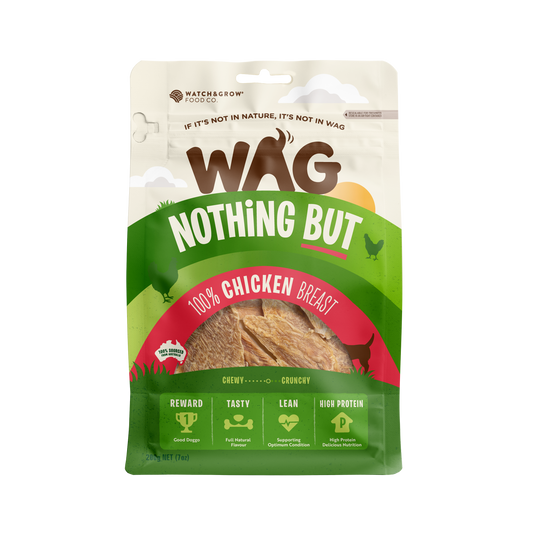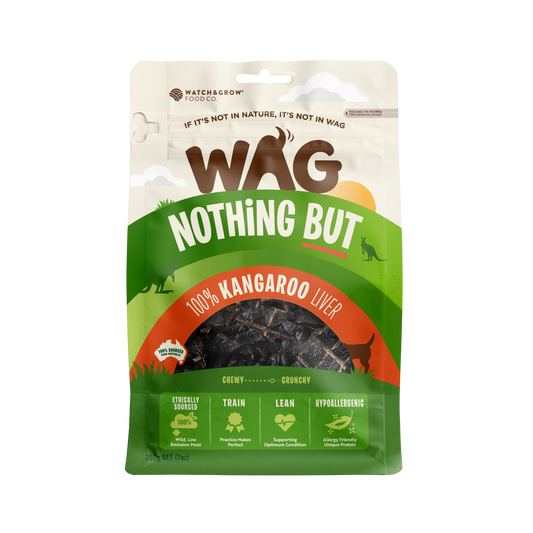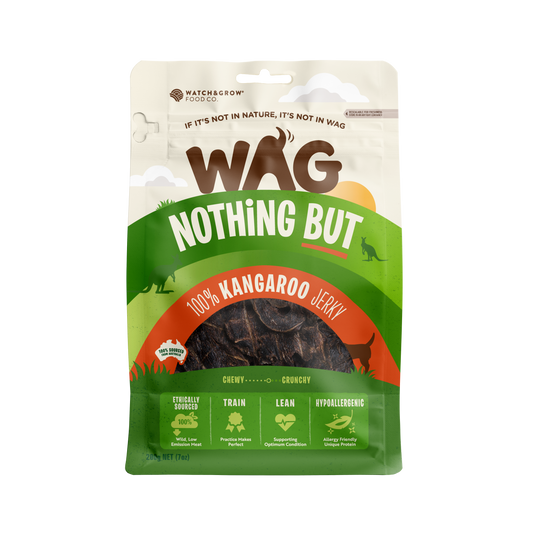Decoding Doggy Behaviour: Exploring Odd and Funny Dog Habits
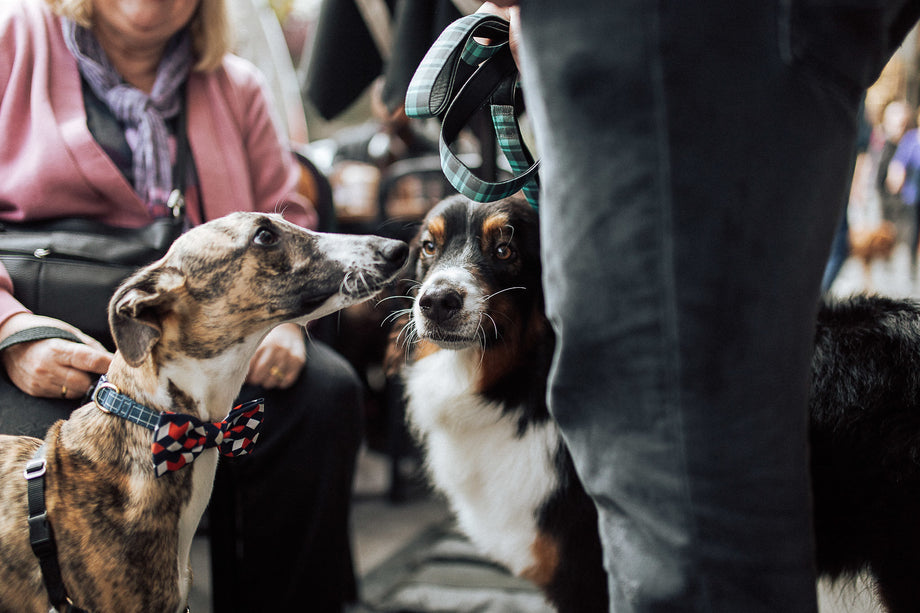
Pet parents know that every dog has a unique personality and funny little quirks that make them who they are.
Have you ever looked at your doggo acting in a particularly humorous or strange way and wondered what's going through that mind of theirs? Maybe your little pooch has a particularly odd habit that just doesn't make much sense to you.
Let's take a look at some of the common funny dog habits, and some of the reasons behind odd behaviour in dogs.
Dog habits explained
Humans can find themselves scratching their head and wondering why their dog is acting in a particular way. We're here to help you unravel the mystery about your dog's funny and odd habits.
The zoomies
Pet parents often state 'the zoomies' as their favourite funny behaviour their canine friend takes part in. When your four-legged friend gets the zoomies, they experience a sudden burst of energy which sends them running laps around the house or backyard. Dogs that are feeling happy and excited love to take part in the zoomies to burn off excess energy.
If your furry friend loves to initiate the zoomies, it's a good sign they're a happy and healthy pup!
Walking in circles before sleeping
You may have seen your canine friend do this - walking around in circles and scratching at the spot beneath them before finally settling down to snooze.
This is perfectly normal behaviour, and is likely your pup's way of getting comfy. It's possible the instinct to find a safe and warm spot to sleep is shining through here.
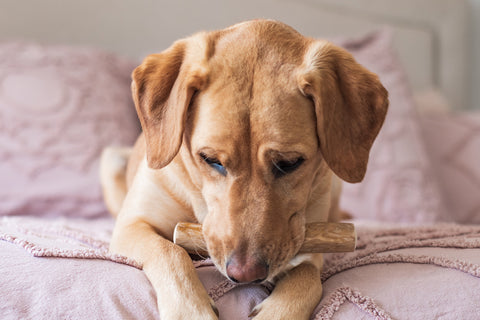
Talking
Our dogs talk to us in their own way, through their body language, barking, growling or howling. But some dog owners know that their dog will actually talk - and it can even sound like they're responding to you in conversation.
There are many different reasons why your dog may 'talk' to you, and the best thing you can do is read their cues. Sometimes, talking is a sign your dog is feeling scared or threatened. Sometimes, they're feeling playful or they know they'll get a reaction from you. Read the other cues such as their body language to get a better understanding of the situation. Sometimes, dogs are just chatty!
Read more about dog body language here.
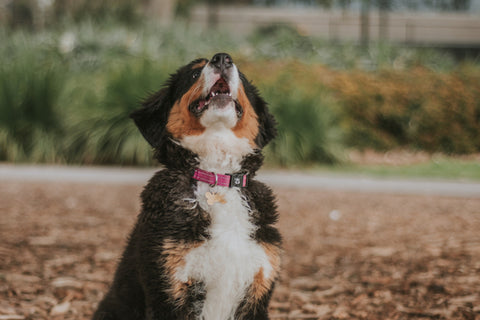
Tail chasing
Tail chasing is often a way your dog is trying to get attention, or burn off excess energy. Tail chasing can be a sign your dog is lacking mental stimulation or is feeding bored.
The occasional bout of tail chasing is usually due to one of the reasons above, but if your dog is compulsively chasing their tail, it could actually be due to an underlying medical condition such as a brain abnormality, so in that case, it's a good idea to get them checked over by your vet.
Digging
Sometimes, your furry friend may dig themselves a hole when the weather is hot, providing themselves with a nice, cool place to lay to help regulate their body temperature. Other times, your cheeky canine friend may have realised they can escape the yard by digging beneath the fence.
Some dog owners view digging as a bad habit, especially if the dog is tearing up the garden beds. The first step to putting a stop to digging is establishing why your dog is digging, and addressing that. If they dig when experiencing separation anxiety or out of boredom, a good owner will address the root cause.
Chewing
Chewing is a very normal behaviour for dogs, especially puppies that are teething.
However, inappropriate chewing can be a bad habit for young dogs and adult dogs alike. Chewing up furniture, clothing or a friendly human hand are common complaints from pet owners of dogs that love to chew.
If your canine companion's excessive chewing is getting destructive, make sure they have plenty of chew toys available to them, as well as outlets to burn off their excess energy. Offer long-lasting natural dog food treats such as a braided collagen stick, so that your furry friend can channel their need to chew in a healthy way.

Burying food
Outdoor dogs may bury their food outside in the dirt, but even more hilarious is when your pooch is trying to dig a hole in their bed, a rug or on furniture to bury their delicious treats away inside.
When you see your furry friend burying food, it's usually a sign they want to save it for later - or that they think it’s a particularly valuable treat (like a brand new moo tube). Or, in the case of a family with multiple four-legged companions, they may be hiding their food from the other pets!
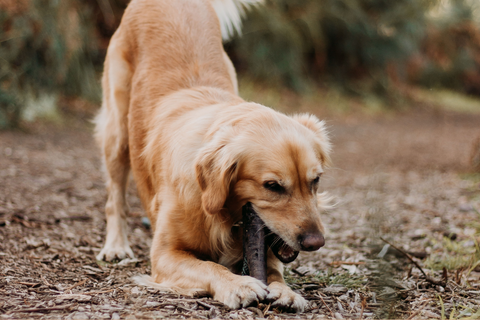
Resource guarding
You may have seen your dog stand rigid over their food, toy, bed or favourite humans. This is known as resource guarding, and is your dog trying to assert their ownership over a particular thing or people.
The dog may get aggressive as they feel a perceived threat to what they believe is theirs. The canis familiaris (the domesticated dog) is a descendant of the wolf. As a result, resource guarding can be instinctual - but can also be developed from environmental factors such as separation anxiety. It also could be related to their upbringing; if they are a rescue pup, they may have had to fend for themselves in the beginning.
Our team reflect on their own dog's peculiarities
The Get WAG team are all too familiar with their own dogs’ weird and wonderful ways, so we have compiled a few anecdotes for you;
Jess - Mimi & Tarzan
“Our Pomeranian Mimi is such a diva. She will sit on the footpath in protest, refusing to walk without our Chihuahua Tarzan. A funny habit that reminds us of their beautiful bond :)”
“Tarzan is such a food-motivated doggo, every time we mention the word ‘treats’ or ‘dinner’ he spins around and around in circles, a super cute display of excitement that always puts a smile on our faces.”
Lisa - Texas & Skyla
“Our Toller Texas favours the hilarious ‘Toller Sleeping Position’, where he sprawls on his back with his legs elegantly up in the air, reminiscent of the iconic Michael Jackson Thriller pose! It's just like the dance routine but performed in the cosy realm of dreams”.
“Our Ridgeback x Staffy Skyla believes she's the reigning queen of the household, demanding to always be privy to the inside shenanigans! She perches herself ON TOP of our outdoor table, gazing longingly into the living area, to let us know she demands to be let inside and be part of the action”.
Sam - North
“North always sits on the flower bed in the morning sun, posing like the Lion King! He also loves to do dog yoga stretches after he wakes up and gets the zoomies every day at exactly 5pm. After a walk, he loves to roll in the grass when we get back home.”
Lana - Jasper
“Our beautiful bloodhound Jasper can drool like the best of them. If we are eating something he will watch intently as a drool bubble appears. He can also have drool wrapped around his nose in a 360 degree circle. Also he doesn't bark or howl, he bains, and his bain is extremely loud. When we take him for a walk he entertains the neighbours.”
Positive reinforcement
Positive reinforcement is used to reward your doggo when they show desired behaviours, rather than punishing them for undesired habits.
You may be able to get your dog's attention with treats such as beef jerky for dogs, verbal praise, pats, a toy - whatever it is that your dog finds most rewarding, you should use as positive reinforcement when they act in the way you are trying to encourage.
Puppies can be trained from a young age, but it's never too late to teach an old dog new tricks. Positive reinforcement is handy in teaching new habits to your dog, as well as trying to break bad dog habits.
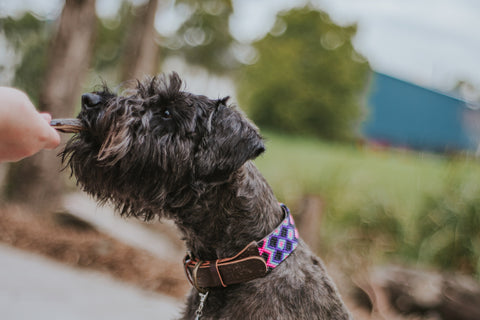
Reward good behaviour with natural dog treats
Great pet owners know their furry friends best. For all the desired habits and funny quirks, offer your fur-child plenty of praise, pats and high quality natural dog treats.
Shop the Recipe
WAG Team
Up Next
Canine Communication: Exploring the Reasons Behind Dog Barking

